
views
- Use a clean-looking business’s restroom when possible, rather than using a busier, more germ-infested one (like an airport’s).
- Pick the bathroom stall that’s closest to the door, since it may be a little less germy than the other stalls.
- Wash your hands thoroughly after using the restroom and do your best not to touch anything during your visit.
How to Avoid Germs in a Public Bathroom
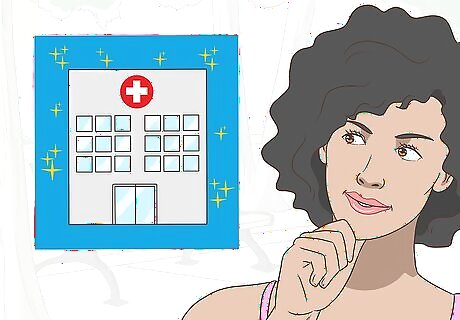
Pick a business that looks relatively clean. Sure, all public bathrooms are germ-infested to some extent—but some places are definitely cleaner than others. If you have multiple options to choose from, opt for a place like a cafe or coffee shop that gets less traffic and has cleaner bathrooms than a more bustling place (like a mall restroom, airport restroom, etc.). Some places might require you to buy something before you use the restroom. Hospitals could be a good bet, since they likely disinfectant their facilities frequently.
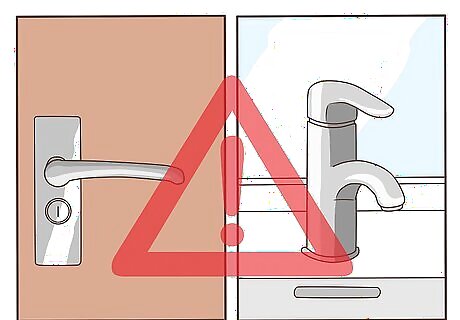
Only touch things if you really need to. You’ll need to touch the door handle to get in the bathroom, along with the stall latch (and possibly the soap dispenser and faucet), but try not to touch any other surfaces unless you absolutely have to. Surfaces in public bathrooms can carry a variety of different bacteria.

Slide into the stall closest to the entrance. According to certain research, people naturally gravitate toward centrally-aligned items, like a bathroom stall. Because of this mentality, the stall that neighbors the entrance is a little less germ-ridden than the others. Choose this one when you step in the bathroom if you’re a big stickler about staying clean. Warning: Don’t put any of your belongings on the bathroom floor, if possible. Instead, use the provided hook on the stall door (if there is one).
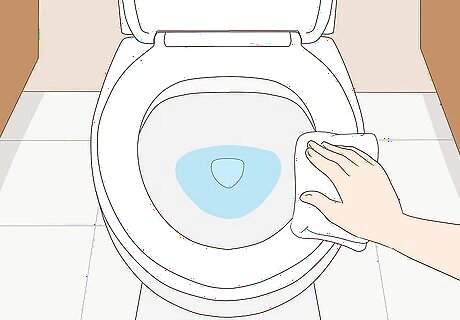
Clean off the seat before using it. As icky as it is, check and see if the previous person left any urine on the seat. Using a big wad of toilet paper, carefully wipe it up and toss it in the toilet without physically touching the seat. You might prefer to squat over the toilet rather than sit. If you don’t want to sit directly on the toilet, check to see if the stall offers seat liners that create a barrier between you and your bottom.
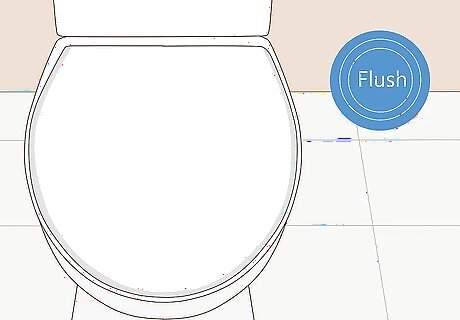
Close your toilet before flushing, if possible. Lidless toilets are infamous for filling the air with tiny particles after being flushed. If your public restroom toilet happens to have a lid, close it before flushing to prevent this from happening. If the toilet is automatic, try to shut it as soon as you get up from using the toilet. If the toilet has a manual handle, grab it with a sheet of toilet paper (or press it with your foot) instead of touching it with your bare hand.
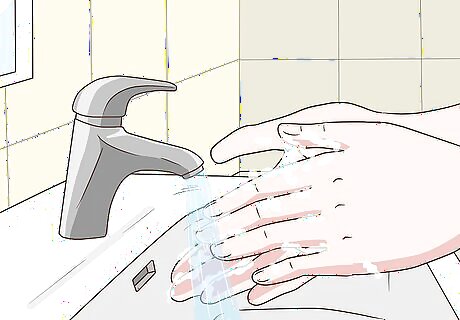
Wash your hands before you leave the bathroom. Lather your hands up with soap and rinse them with warm water for at least 20 seconds (the “Happy Birthday” song twice) to clean off any germs. Less modern sinks might have finicky faucets that need to be pressed multiple times to stay on. Just do the best you can!
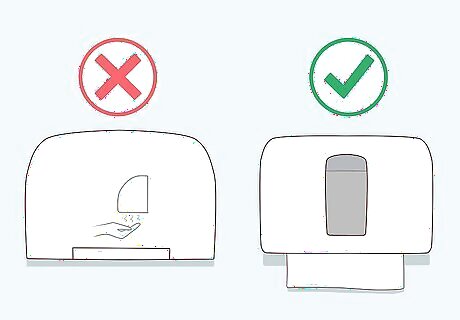
Dry your hands with paper towels, if possible. Although arguably better for the environment, research indicates that air dryers are not great in terms of hygiene—they actually help germs spread around. If it’s an option, dry your hands off with paper towels instead. If the paper towel dispenser isn’t motion activated, use your sleeve to manually get a fresh paper towel.
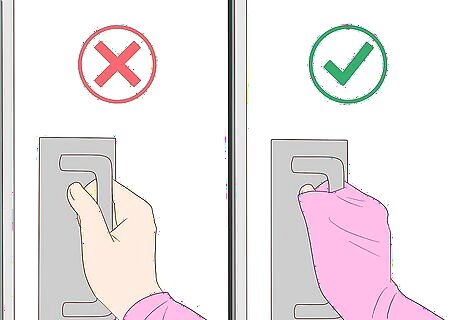
Avoid touching the door handle as you leave. Pull up your sleeve and use that to open the door. Better yet, see if another person is entering the bathroom and let them hold the door for you.
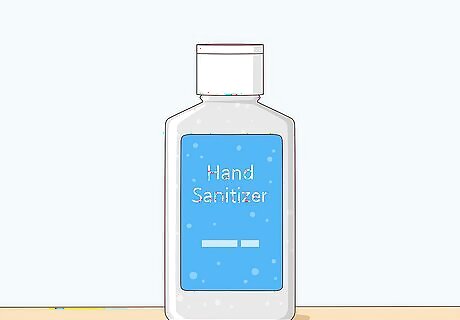
Use hand sanitizer afterward for some extra peace of mind. Hand sanitizer is by no means a miracle cure that kills all germs known to man, but it can still help keep your hands pretty clean. Apply a small amount of product to your hands and rub it all over the skin until your hands no longer feel wet.
How to Safely Use a Public Bathroom if You’re Gender-nonconforming
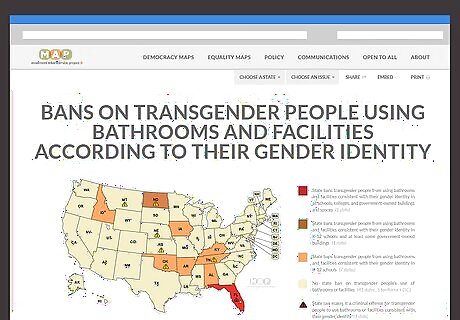
See what your local legislation says about using public bathrooms as a trans person. In the United States, legislation regarding trans individuals and public bathrooms is state-regulated. Click or tap here to get a rundown of what the legislation in your state looks like, so you can be more informed about your current situation. Many states don’t have any specific regulations when it comes to trans bathroom use, especially states on the east and west coast (barring Florida). Currently (as of January 2024), Florida has the most discriminatory legislation for trans folks. States like Kentucky, Tennessee, Alabama, Arkansas, Oklahoma, Iowa, North Dakota, and Idaho also have stringent regulations.

Ask a friend to go to the bathroom with you. If you’re feeling anxious or uncomfortable about using the bathroom for any reason (especially if you live in a state with strong anti-trans legislation), see if a friend or loved one is comfortable going with you. If you run into anyone rude or hostile, having a physical support system will make it much easier to handle the situation. If you live in a state with strict restrictions, ask a friend to accompany you to whichever bathroom you feel most comfortable entering.

Choose the bathroom that you feel safest using. You know yourself best: which bathroom do you think you’d feel safer in, or less likely to run into someone prejudiced? That restroom is likely your best bet when it comes to feeling safer and more secure in public. Florida makes it a criminal issue for trans individuals to use bathrooms that don’t match their assigned sex at birth, while other states use discriminatory language to prevent trans people from going to the restroom that matches their gender identity. In these states, the safest bathroom might unfortunately be the one that matches your assigned sex at birth, not your current gender identity. Check out your local legislation to determine the best course of action for you. If your state doesn’t have any major restrictions, for instance, you might feel safe using the bathroom that matches your gender identity. It’s incredibly unfortunate to live in a time where it’s potentially unsafe to use a public restroom that doesn’t match your gender identity. However, your safety and personal well-being always need to come first.

Project as much confidence as possible when you enter the bathroom. Unfortunately, it’s impossible to change or control what other people think—but you can control how you present yourself. Stand at your full height and walk into the bathroom confidently. Once you’re inside, do your business and leave without interacting with anyone else there. Acting confident is good advice for navigating any public space as a trans or gender-nonconforming individual.



















Comments
0 comment